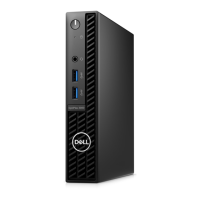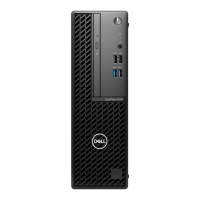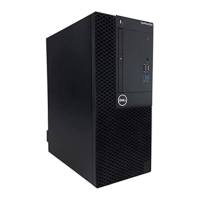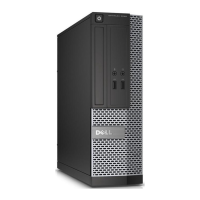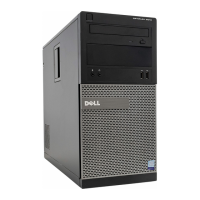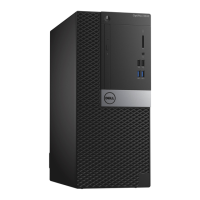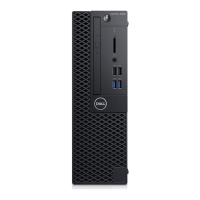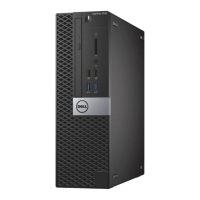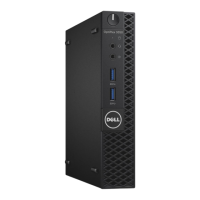What to do if my Dell Desktop has a CPU failure?
- DDr. Brandi FerrellAug 21, 2025
If your Dell Desktop is experiencing a CPU failure, run the Dell Support Assist/Dell Diagnostics tool. If the problem persists, replace the system board.
What to do if my Dell Desktop has a CPU failure?
If your Dell Desktop is experiencing a CPU failure, run the Dell Support Assist/Dell Diagnostics tool. If the problem persists, replace the system board.
What to do if my Dell OptiPlex 3000 Thin Client has a system board/chipset error?
If your Dell Desktop is showing a system board or chipset error, replace the system board.
What to do if my Dell Desktop has a PCI or Video card/chip failure?
If your Dell Desktop is experiencing a PCI or video card/chip failure, replace the system board.
What to do if my Dell OptiPlex 3000 Thin Client has a memory/RAM failure?
If you're experiencing a memory/RAM failure in your Dell Desktop, try resetting and swapping the memory modules among the slots. If the issue continues, replace the memory module.
How to fix a BIOS Recovery image not found error on a Dell OptiPlex 3000 Thin Client?
To resolve a 'BIOS Recovery image not found' error on your Dell Desktop, flash the latest BIOS version. If the problem continues, replace the system board.
How to fix BIOS Recovery image found but invalid error on a Dell OptiPlex 3000 Thin Client?
To fix a 'BIOS Recovery image found but invalid' error on your Dell Desktop, flash the latest BIOS version. If the issue persists, replace the system board.
What to do if my Dell Desktop has an LCD failure (EC detection of power rail failure)?
If the EC detects a power rail failure related to the LCD on your Dell Desktop, replace the system board.
What to do if my Dell OptiPlex 3000 Thin Client Desktop has a CMOS battery failure?
If your Dell Desktop is experiencing a CMOS battery failure, reset the main battery connection. If the problem continues, replace the main battery.
What to do if my Dell OptiPlex 3000 Thin Client Desktop has a TPM detection failure?
If your Dell Desktop has a TPM detection failure, replace the system board.
What to do if my Dell Desktop has an Unrecoverable SPI Flash Failure?
If your Dell Desktop has an unrecoverable SPI Flash failure, replace the system board.
Guidelines for protecting your computer and ensuring personal safety during maintenance.
Steps to take to prepare the computer before opening it for service.
General safety measures to follow before and during disassembly/reassembly procedures.
Information on preventing damage from static electricity to sensitive components.
Details about the components and use of an ESD field service kit for protection.
Steps to follow after completing internal computer maintenance and before powering on.
Instructions for removing and installing the M.2 2230 solid-state drive.
Steps for removing and installing memory modules (RAM).
Instructions to reset BIOS settings by clearing CMOS.
Method to clear system and BIOS passwords by contacting support.
Information about the built-in hardware diagnostic tool.
Step-by-step guide to execute the pre-boot system performance diagnostics.
Guidelines for protecting your computer and ensuring personal safety during maintenance.
Steps to take to prepare the computer before opening it for service.
General safety measures to follow before and during disassembly/reassembly procedures.
Information on preventing damage from static electricity to sensitive components.
Details about the components and use of an ESD field service kit for protection.
Steps to follow after completing internal computer maintenance and before powering on.
Instructions for removing and installing the M.2 2230 solid-state drive.
Steps for removing and installing memory modules (RAM).
Instructions to reset BIOS settings by clearing CMOS.
Method to clear system and BIOS passwords by contacting support.
Information about the built-in hardware diagnostic tool.
Step-by-step guide to execute the pre-boot system performance diagnostics.
| Operating system installed | Wyse ThinOS |
|---|---|
| Trusted Platform Module (TPM) | Yes |
| Processor cache | 4 MB |
| Processor cores | 4 |
| Processor model | N5105 |
| Processor family | Intel® Celeron® N |
| Processor frequency | 2 GHz |
| Processor cache type | Smart Cache |
| Processor manufacturer | Intel |
| Processor boost frequency | 2.9 GHz |
| On-board graphics card model | Intel® UHD Graphics |
| Cables included | AC |
| Memory slots | 2x SO-DIMM |
| Internal memory | 8 GB |
| Memory clock speed | 2933 MHz |
| Internal memory type | DDR4-SDRAM |
| Maximum internal memory | 16 GB |
| Memory layout (slots x size) | 1 x 8 GB |
| USB 2.0 ports quantity | 3 |
| Ethernet LAN (RJ-45) ports | 1 |
| Product color | Black |
| Cable lock slot type | Kensington |
| Display included | No |
| Wi-Fi standards | 802.11a, 802.11b, 802.11g, Wi-Fi 4 (802.11n), Wi-Fi 5 (802.11ac), Wi-Fi 6 (802.11ax) |
| Cabling technology | 10/100/1000Base-T(X) |
| Top Wi-Fi standard | Wi-Fi 6 (802.11ax) |
| WLAN controller model | Intel Wi-Fi 6E AX210 |
| Ethernet LAN data rates | 10, 100, 1000 Mbit/s |
| Power supply | 65 W |
| AC input voltage | 100 - 240 V |
| AC input frequency | 50/60 Hz |
| Operating altitude | -15.2 - 3048 m |
| Non-operating altitude | -15.2 - 10668 m |
| Storage temperature (T-T) | -40 - 65 °C |
| Operating temperature (T-T) | 10 - 40 °C |
| Storage relative humidity (H-H) | 5 - 95 % |
| Operating relative humidity (H-H) | 20 - 80 % |
| Storage media | eMMC |
| Total storage capacity | 64 GB |
| Depth | 178 mm |
|---|---|
| Width | 36 mm |
| Height | 182 mm |
| Weight | 1104 g |

